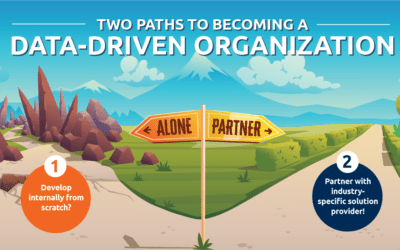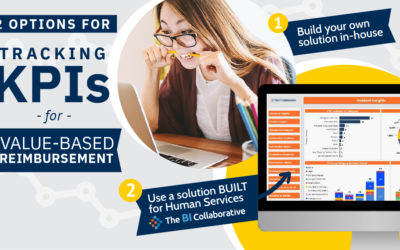As Healthcare Providers lead the way in increasing investments surrounding Business Intelligence & Data Analytics because we know “informed decisions are better decisions,” the race is on to establish a data-driven culture.
Unfortunately, a Forrester survey revealed that less than 20% of all raw business and operational data makes it into analytical databases and applications, and only 20% of knowledge workers who could be leveraging analytical applications are doing so. This begs a serious question: If you could join a BI platform comparative community and leverage national experience then why would you isolate your organization by building something internally?
While Business Intelligence isn’t new, organizing and leveraging today’s abundance of data remains a challenge. Because organizations of all sizes have programmatic information siloed in disparate systems and Excel spreadsheets, reporting is time-consuming. It requires multiple people manually aggregating a wealth of data, sometimes without analysis and oftentimes with human error. When data isn’t easily accessible or timely, it slows decision making, encourages guesswork, and prevents a true understanding of empirical trends.
Here’s the thing; digital technologies and BI best practices available today versus five years ago have solved challenges early adopters experienced.
For example:
- Creating a “virtual data warehouse” to organize data from disparate systems and spreadsheets is easier than you think.
- Data analytics is best done in the context of a business problem, therefore BI should not be an IT initiative, but rather led by an Operations Executive supported by IT.
- It takes months, not years to implement a powerful BI solution.
BI Easy Button
BI partnering opportunities have clearly evolved. In fact, The BI Collaboration offers a 13 module BI Analytics Decision Support platform exclusively for Human Services organizations that is completely operational in nine months. It’s like a BI easy button. Each 3-module phase is deployed in 10 weeks so organizations can engage employees by department and realize a ROI incrementally. Most organizations start with the single Incident Management Module QuickStart, which is operational in as little as two weeks for a $1,000 set-up fee (in states where initial client and state system integration is completed) saving 20 to 200 man-hours in just quarterly incident management reporting.
So, you have the data, and we have a solution with a proven implementation strategy. It’s time to put your data to work.
Want to see how our Incident Management Module transforms your data into insights that will drive impactful business outcomes? Schedule a convenient meeting date and time here.



